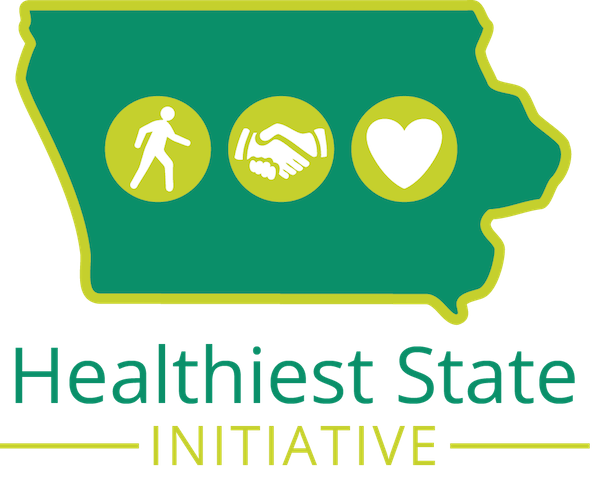10 Ways to Keep Your Kids Moving
By Lauren Kollauf on Thursday, March 19, 2020
Move More at Home
There are plenty of fun and creative ways to keep moving our bodies while we spend more time at home.
We collaborated with our 5-2-1-0 Registered Sites and our partners to compile this list of our favorite ways to keep kids physically active:
1. Get outside!
You can still get outside and go for a family walk, bike ride or just jump around! Our new routines likely mean more time spent inside, so get outside and enjoy the fresh air.
2. Hy-Vee KidsFit
Hy-Vee KidsFit challenges are perfect for at-home workouts. To help support kids and families at this time, they have launched Hy-Vee KidsFit At Home which will include a new online 15- to 20-minute workout video every day, seven days a week at 9 a.m.
3. GoNoodle
GoNoodle is a favorite of classroom teachers because they offer free mindfulness and movement videos created by child development experts. Try it out at home: GoNoodle for Families.
4. Make your own Activity Dice
Created by Angela Read, P.E. teacher at Andrew Community School. (PRINTABLE: Here's the activity dice template.)
5. Create an obstacle course
This idea was shared by Bobbie Nelson, child care provider at Bright Beginnings in Coralville:
"Draw up a picture card for each obstacle course activity station. Use can goods or other items to jump over. One station can be 10 jumping jacks. Another can be 3 spins. Add masking tape lines and zig-zags on the floor to hop, jump and balance on. Balance a bean bag or book on your head. Hula hoop at another station. Run in place as fast as you can. March around a table. Do the crab walk. Endless possibilities. My kids will do this over and over. They love it!"
6. Cosmic Kids Yoga
Cosmic Kids is another favorite of teachers to introduce students to yoga and mindfulness. Try out the videos for free on their Cosmic Kids YouTube page or download the Cosmic Kids app to stream videos ad-free (first two weeks are free).
MORE RESOURCES: Free 5-2-1-0 activity sheets + coloring pages
7. Use the Active Home resource center
Lyn Jenkins, Iowa Department of Education P.E. and health consultant, recommends Active Home. The free website provides parents with "meaningful movement opportunities that progress students toward physical education and social and emotional learning outcomes."
8. Music + movement videos on YouTube
A quick search on YouTube for "movement and music" returns endless options for videos that will help your kids get on their feet and having fun. Here's one of our favorites:
9. Play 'Fitness Deck'
This activity comes from our 5-2-1-0 Healthy Choices Count! Activity & Recipe Book. All you need for Fitness Deck is a deck of cards. Assign a different activity to each suit, such as:
Hearts = jumping jacks
Spades = sit-ups
Diamonds = push ups
Clubs = squats
Shuffle the deck of cards and take turns with your child picking up the top card. The number on the card represents the number of times you need to complete an activity. Before starting, decide the value of Aces, Jacks, Queens, and Kings.
MORE RESOURCES: How to practice 5-2-1-0 habits at home
10. Use brain breaks in your home
Originally intended for use by teachers, the new "Brain Breaks: 50+ Classroom Energizers" guide from the Iowa Department of Public Health could easily be integrated into your home – especially if you're trying to keep your kids engaged in active learning while they are out of school.
5-2-1-0 Healthy Choices Count!
5-2-1-0 Healthy Choices Count! is a health-focused movement for kids that’s under the nationally recognized program, 5-2-1-0. It all starts by encouraging them to eat and play the right way.
This proven, scientific method helps keep kids healthy by focusing on the importance of four habits:
5 or more servings of fruits and vegetables
2 hours or less of screen time (television, computer, video games, phones, etc.)
1 hour or more of physical activity
0 (or reduce) sugar-sweetened beverages - drink more water!
To access more free resources that support healthy habits, click here.


